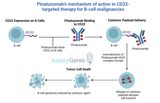Freezing Stimulated T Cells: A Detailed Guide
Cryopreservation of stimulated T cells is a common technique in immunology research, allowing for long-term storage while maintaining their functional viability. Stimulated T cells—especially those activated with antigens, cytokines, or co-stimulatory molecules—tend to be more metabolically active than resting cells, which makes them sensitive to the freezing process. Proper cryopreservation techniques ensure that T cells remain viable and functional upon thawing, allowing for consistent experimental results.
1. Preparation Before Freezing
Cell Stimulation and Activation
Prior to freezing, T cells are often stimulated with agents like:
- Antigens or peptides for antigen-specific T cells.
- Cytokines such as IL-2 or IL-7 to support T cell proliferation.
- Anti-CD3/CD28 antibodies to engage T cell receptors and co-stimulatory pathways.
Ensuring that the cells are actively proliferating and healthy at the time of freezing can enhance post-thaw viability and functionality.
Essential Materials and Equipment
- Cryopreservation Medium: Typically consists of 90% FBS (fetal bovine serum) + 10% DMSO (dimethyl sulfoxide), where DMSO acts as a cryoprotectant.
- Cryovials: Sterile, labeled cryovials to store cells.
- Controlled-Rate Freezer or Styrofoam Box: For gradual freezing before storage in liquid nitrogen.
- Centrifuge and cell counter: For preparing and counting cells prior to freezing.
2. Cryopreservation Protocol for Stimulated T Cells
Step-by-Step Process
- Harvest and Count Cells
- Collect cells from the culture, ensuring they are in the exponential phase of growth.
- Count the cells using a hemocytometer or automated cell counter to determine cell density.
- Prepare Cells for Freezing
- Centrifuge cells at 300-400 x g for 5 minutes to pellet them.
- Discard the supernatant and gently resuspend the cell pellet in cold cryopreservation medium at a concentration of 5-10 x 10⁶ cells/mL.
- Aliquot Cells into Cryovials
- Transfer 1 mL of the cell suspension into each pre-labeled cryovial.
- Ensure that the cryovials are securely capped and properly labeled with the date, cell type, and concentration.
- Slow Cooling Process
- To prevent cell damage, freeze cells slowly:
- Controlled-Rate Freezer: Set to cool cells at a rate of 1°C per minute down to -80°C.
- Styrofoam Container Method: Place vials in a Styrofoam container at -80°C for 6-24 hours to achieve gradual cooling.
- Transfer to Liquid Nitrogen
3. Thawing Stimulated T Cells
Proper thawing is essential to maximize cell recovery and functionality post-freezing.
Step-by-Step Thawing Process
- Quick Thaw in a 37°C Water Bath
- Remove the cryovial from liquid nitrogen and quickly place it in a 37°C water bath.
- Gently swirl the vial until only a small ice crystal remains.
- Dilute Cells Gradually
- Transfer thawed cells to a conical tube with 10 mL of pre-warmed complete medium to dilute the DMSO gradually.
- Centrifuge at 300-400 x g for 5 minutes to pellet the cells.
- Remove DMSO and Resuspend Cells
- Discard the supernatant containing DMSO and gently resuspend the cell pellet in fresh, pre-warmed complete medium.
- Incubate and Rest
- Transfer cells to a culture plate or flask and incubate at 37°C with 5% CO₂.
- Allow cells to recover for 24 hours before using them in downstream assays, as they may need time to regain full functionality.
4. Tips for Optimal Cryopreservation and Recovery of Stimulated T Cells
Step | Best Practice |
|---|---|
Cryopreservation Medium | Use freshly prepared FBS + DMSO for optimal results. |
Freezing Rate | Freeze at a controlled rate (1°C/min) to -80°C. |
Storage | Store long-term in liquid nitrogen for best viability. |
Thawing | Thaw rapidly at 37°C to minimize osmotic shock. |
Post-Thaw Recovery | Allow cells 24 hours to rest before assays. |
Additional Tips
- Minimize Freeze-Thaw Cycles: Avoid repeated freeze-thaw cycles, as they can significantly reduce cell viability and function.
- Add IL-2 Post-Thaw: Adding cytokines such as IL-2 immediately post-thaw can support recovery and functionality for certain T cell populations.
- Assess Viability and Function: After recovery, assess cell viability using trypan blue exclusion and functional assays (e.g., proliferation or cytokine production) to confirm T cell functionality.
5. Troubleshooting Common Issues
Issue | Possible Cause | Solution |
|---|---|---|
Low viability post-thaw | Rapid freezing, osmotic shock | Use controlled-rate freezing; follow gradual thawing |
Reduced T cell functionality | DMSO toxicity or nutrient depletion | Remove DMSO quickly post-thaw, provide cytokines |
Excessive clumping | High cell density in cryopreservation | Optimize cell concentration (5-10 x 10⁶ cells/mL) |
By following these detailed steps for freezing and thawing stimulated T cells, researchers can preserve cell viability and functionality, ensuring that T cells remain effective for downstream applications such as proliferation assays, cytokine production, and immune response studies. Proper cryopreservation techniques ultimately support consistent and reproducible results across experiments.
Recent Posts
-
Tigatuzumab Biosimilar: Harnessing DR5 for Targeted Cancer Therapy
Tigatuzumab is a monoclonal antibody targeting death receptor 5 (DR5), a member of the …17th Dec 2025 -
Alemtuzumab: Mechanism, Applications, and Biosimilar Advancements
Alemtuzumab is a monoclonal antibody targeting CD52, a glycoprotein highly expressed on …13th Jan 2025 -
Pinatuzumab: Advancing Cancer Research and Therapeutics
Pinatuzumab vedotin is an antibody-drug conjugate (ADC) targeting CD22, a cell surface …13th Jan 2025




